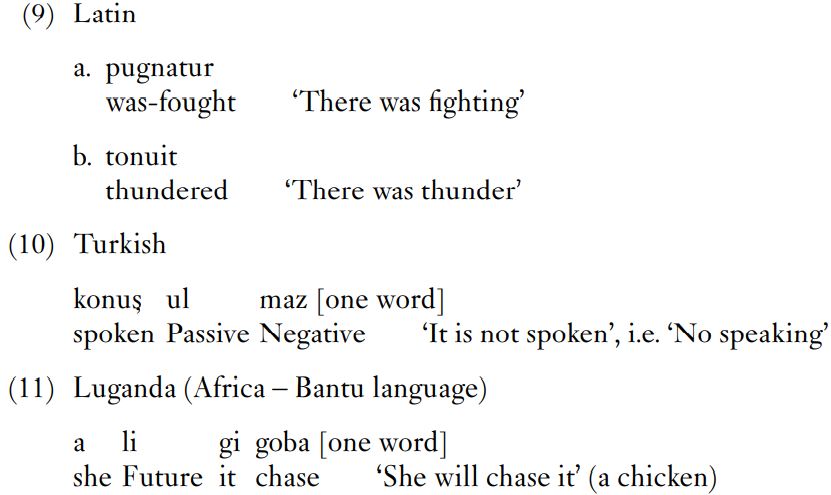


 Grammar
Grammar
 Tenses
Tenses
 Present
Present
 Past
Past
 Future
Future
 Parts Of Speech
Parts Of Speech
 Nouns
Nouns
 Verbs
Verbs
 Adverbs
Adverbs
 Adjectives
Adjectives
 Pronouns
Pronouns
 Pre Position
Pre Position
 Preposition by function
Preposition by function 
 Preposition by construction
Preposition by construction
 Conjunctions
Conjunctions
 Interjections
Interjections
 Grammar Rules
Grammar Rules
 Linguistics
Linguistics
 Semantics
Semantics
 Pragmatics
Pragmatics
 Reading Comprehension
Reading Comprehension|
Read More
Date: 2023-10-24
Date: 2023-06-30
Date: 2023-05-13
|
Descriptions that focus on dependency relations do not devote much time to the arguments for and against verb phrases. They incorporate the view that other divisions of the clause, based on dependencies, are more important. Clauses are analyzed as having a nucleus and a periphery. The nucleus contains the verb and its complements (subject, direct object, indirect object and oblique objects/adverbs of direction); the periphery consists of oblique objects which are adverbs of time or adverbs of location, and some other types of adverb. (Adverbs are a very large and heterogeneous class, and in at least one construction – the middle construction – adverbs of manner seem to be obligatory with some verbs; for example, Her new book reads well is quite acceptable but *Her new book reads is not acceptable.)
The split between nucleus and periphery is sometimes replaced by a three-way split between core, nucleus and periphery. The core of a clause is the verb, the nucleus is the verb plus complements as described above, and the periphery is also as described above. The idea that the verb in a clause is the core fits with other properties of verbs. We saw on dependencies that the verb in a clause can be regarded as controlling the other constituents. This view provides an elegant way of handling the relationships that are the concern of the lexicon or dictionary.
A final and strong piece of evidence for the core position of verbs in clauses comes from languages in which a clause can consist of a single verb. Examples are given in (9)–(11).

The Latin clause in (9a) consists of the verb pugnatur. This verb is passive; while it might be thought that a subject noun phrase has been ellipted, it is difficult to know what that noun phrase might be. The same applies to the Turkish passive verb in (10). The Luganda verb in (11) is active. No independent noun phrases are needed because in context the person doing the chasing and the bird being chased are obvious to the hearer
|
|
|
|
4 أسباب تجعلك تضيف الزنجبيل إلى طعامك.. تعرف عليها
|
|
|
|
|
|
|
أكبر محطة للطاقة الكهرومائية في بريطانيا تستعد للانطلاق
|
|
|
|
|
|
|
مركز الرسول الأعظم الطبّي يُطلق خطّة طبية وصحية شاملة طيلة أيام عيد الفطر المبارك
|
|
|